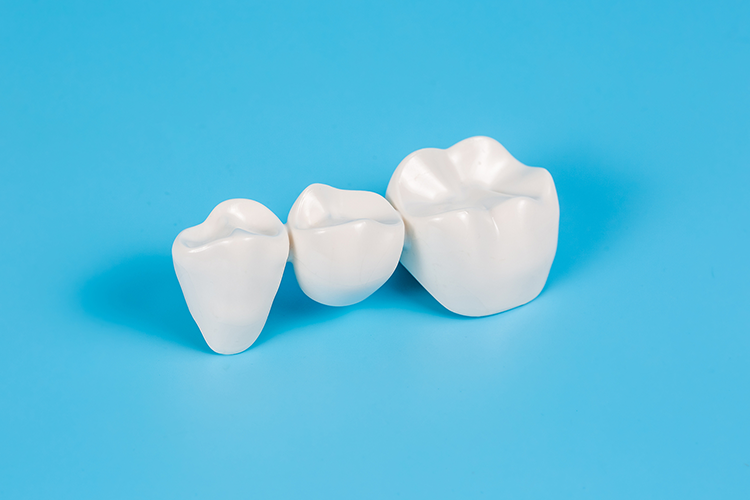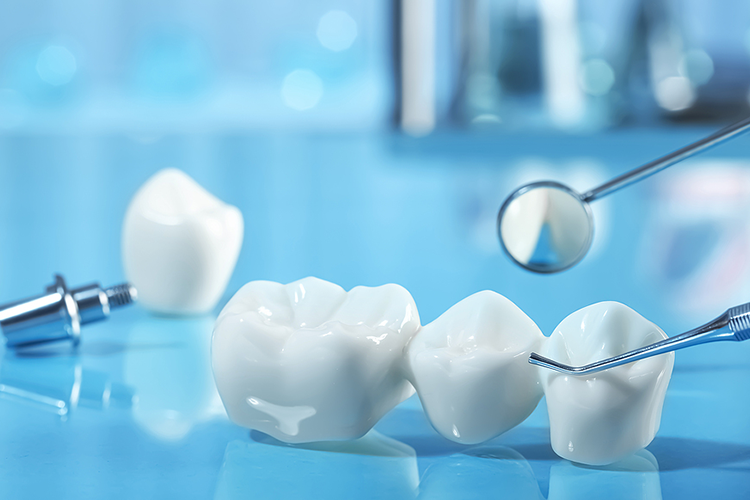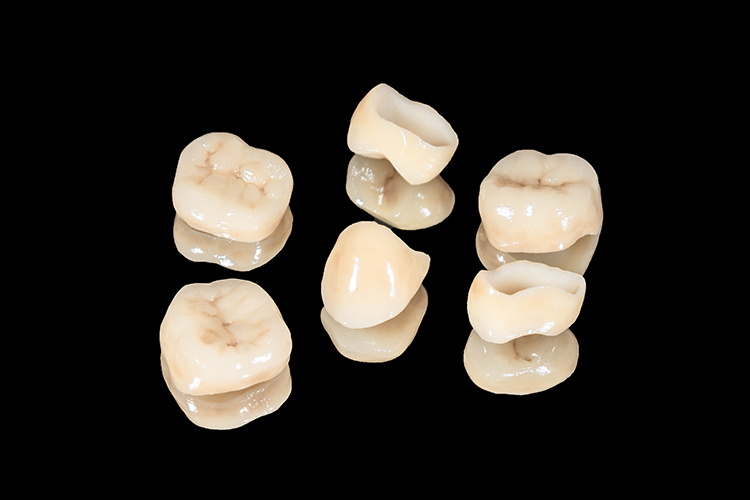Crowns and Bridges

Crowns and bridges are two of the most widely used tooth restorations out there. Crowns are popularly known as ‘dental caps’ as they are hollow on the inside and fit over a tooth. Bridges are used to replace missing teeth that are extracted due to external trauma, cavities, gum diseases, etc. Since both of them are made from tooth-colored ceramic, they would perfectly mimic the appearance of natural teeth.
When are crowns used?
Crowns are known to have a wide array of uses. They are used to treat the following type of conditions:

Misshapen teeth:Teeth that are naturally out of shape are called misshapen teeth. They can be made to look better by bonding crowns to their surface.
Chipped teeth: Teeth may sometimes chip off near the edge when the patient takes a hard blow to the mouth. This can result in the tooth losing a certain edge, giving the smile a displeasing look. Crowns can be used to restore such teeth as well.
Cracked or broken teeth: Though the enamel is the hardest part of the human body, it may break or sustain cracks when the patient takes a hard blow to the mouth or has a bad fall. When left untreated, the tooth could get infected or completely fail due to crack propagation. Hence, restoring it with a crown is a great way to save it.
Worn out teeth:Regular wear of the teeth isn’t harmful. But, when the patient suffers from a condition called bruxism, which is night-time teeth grinding, the teeth may get worn down to the stumps. This ruins their aesthetics and makes it quite difficult to chew food. Crowns would perfectly restore the tooth to its ideal shape and size.

Why should you choose crowns and bridges?
Oral aesthetics is just as important as one’s oral health. Hence, we recommend tooth-colored crowns and bridges to our patients as they would be indistinguishable amidst the natural teeth. They can be customized and made to perfectly mimic the appearance of the teeth.
- The ceramic material used to fabricate them is highly durable and long-lasting. Also, it is quite stain resistant.
- They help to save the natural tissues of the teeth as they prevent extractions.
- Crowns strengthen a weak and damaged tooth, thereby holding it together.
- Bridges prevent the drifting of the teeth which occurs due to the gap left by the missing tooth.
- You can resume your everyday activities, such as biting, chewing, etc., like normal after getting the restorations.

How are crowns and bridges placed?
During the initial visit, the dentist would conduct a thorough screening of the teeth to determine the severity of the condition. Depending on the observations and the factors that could affect the treatment procedure, the candidacy for the restorations will be confirmed. The teeth will be cleaned and a thin layer of enamel will be removed by buffing to make space for the restorations. A highly precise digital mold will be taken to serve as a reference. This will be used to fabricate the restorations in a dental laboratory. Until then, temporary restorations may be placed on the teeth.
Once the permanent restorations are fabricated, the teeth will be cleaned and etched. This is done to roughen their surface and provide a good grip for the ceramic appliances. Dental adhesives will be used to bond them to the prepared tooth, after which a curing light will be used to harden it. It may be polished to enhance the appearance and a bite test would ensure perfect fit and comfort.
Schedule an online appointment or call us at (614) 459-3229 to have a consultation with Dr. Peng and we’ll be able to guide you further.
Office Hours
MON9:00 am - 5:00 pm
TUE9:00 am - 5:00 pm
WED9:00 am - 5:00 pm
THU9:00 am - 5:00 pm
FRIClosed
SATAppointment Only
SUNClosed
